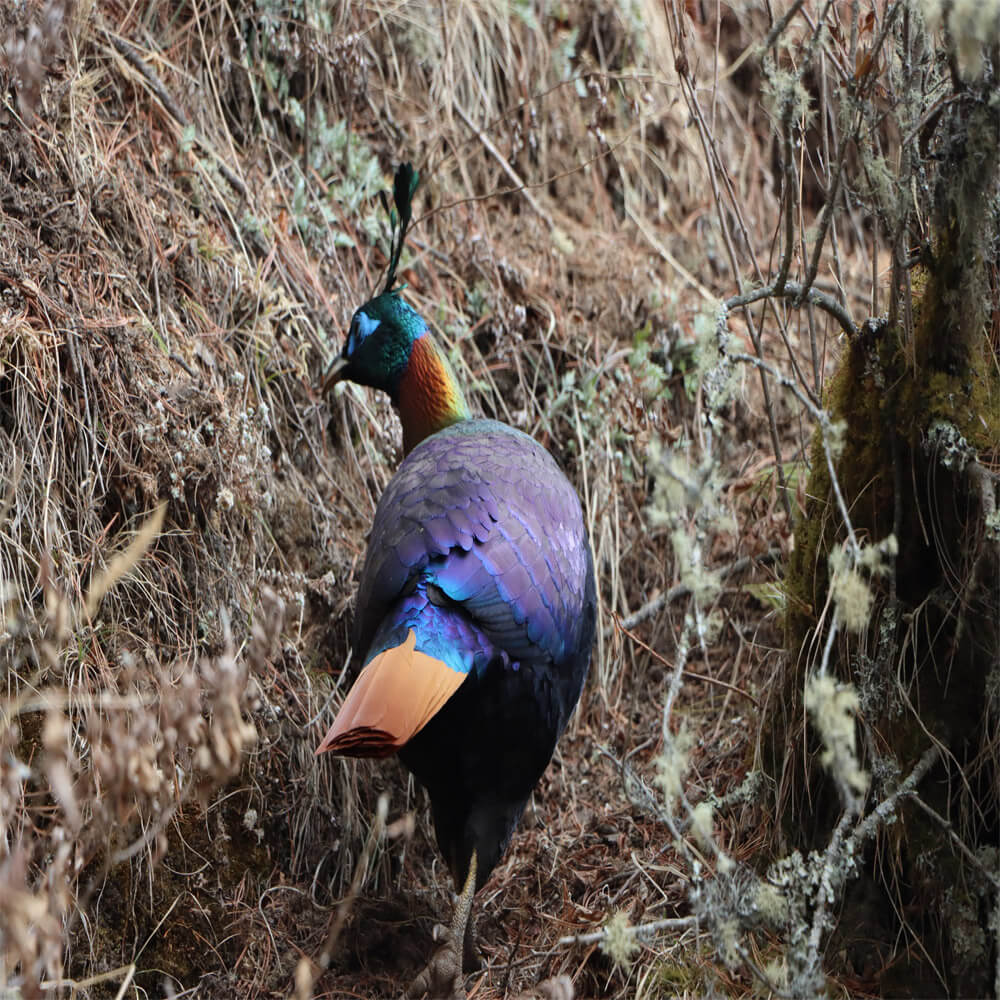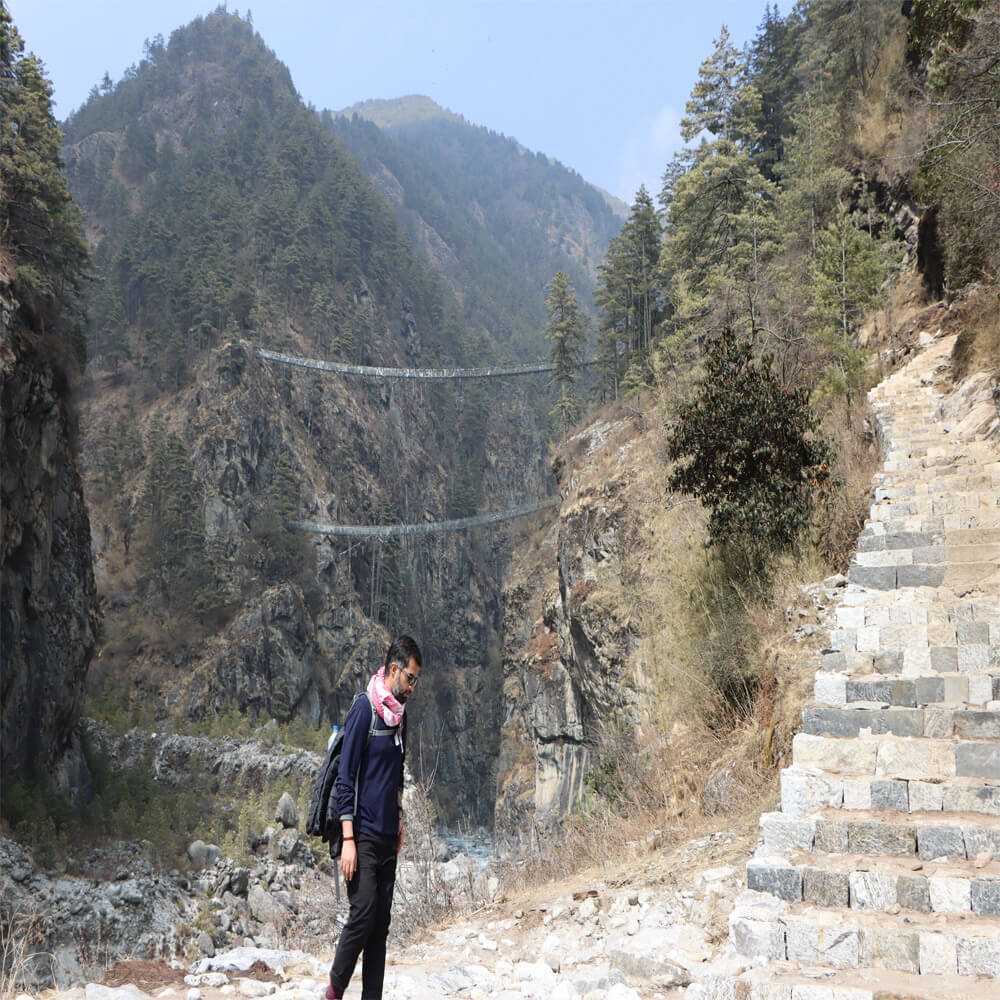Trekking to Everest Base Camp with kids may sound challenging but with proper planning, it can be safe, memoriable, and deeply rewarding family adventure. From choosing the right itinerary and ensuring the acclimatization to findingfamily friendly tea house along the trail, this journey offers children a chance to experience the culture, nature and majesty of the Himalyan firsthand.
Everest Base Camp with Kids: A Safe & Rewarding Trekking Experience
When travelers plan a rewarding trek with their kids, Everest Base Camp often comes to mind as one of the most unforgettable experiences. The Everest Base Camp with kidstrekking package is a safe and well-known adventure that blends excitement, family bonding, and the stunning beauty of the Himalayas. Trekking to EBC with children not only offers the thrill of walking among the world’s highest peaks but also gives young adventurers a chance to experience Sherpa culture, mountain traditions, and the wonders of nature. This family-friendly trek creates lasting memories and proves that the Everest region is not just for seasoned trekker’s, but also for parents and kids seeking an once-in-a-lifetime adventure.
Why choose an Everest Base Camp family trek?
The Everest base camp family trek is an uncommon chance for parents and children to share an unforgettable adventure journey, with both parents and kids at the same time. Unlike regular trekking routes, it affirms both family bonding and safety while offering the astonishing landscape of the Himalayas. Those families who love nature, culture, and adventure find this trek rewarding and inspiring.
Is it possible to trek in Nepal with kids?

Many parents are wondering if trekking in Nepal with kids is suitable and possible. The answer is yes, with proper preparation, a well-planned itinerary with flexibility, and a knowledgeable trekking guide. The trails to EBC are accessible for children when paced gradually, with enough rest days for acclimatization. It makes the journey not just possible but enjoyable for the whole family.
Child-friendly Everest trek Experience.
A child-friendly Everest trek focuses attention on safety, comfort, and fun. Families can anticipate shorter walking days, comfortable teahouse accommodations, and engaging activities along the way. Kids often enjoy spotting yaks, learning about mountain traditions and cultures, and meeting local Sherpa children, making the trek both educational and adventurous.
Safe trekking in the Himalayas with children
Safety is the major priority for families throughout the journey. Choosing a safe trekking in the Himalayas package ensures expert guidance, proper acclimatization, and support from porters, keeping you in touch with company crews every time. Professional guides are trained to assist families in handling altitude and making the trek secure for children as young as 7–8 years old.
Family adventure in Nepal’s Everest region
Beyond the towering mountains, the Everest Base Camp trek is a journey of togetherness and cherished memories. This family adventure in Nepal’s Everest region blends excitement with cultural exploration, the wonder of nature, the day-to-day lifestyle of climbers, their customs, etc. Families walk through traditional villages, explore monasteries (the old Tyangboche monastery), and acquire information about Sherpa culture, adding a rich cultural layer to the Himalayan scenery.
Hiking with children in Everest region
Hiking with children in the Everest region requires patience and encouragement. Families are advised to maintain a flexible pace, keep kids hydrated, and make the trek fun with stories and games along the trail. This approach keeps young trekkers motivated while making the journey stress-free for parents.
Family bonding trekking experience
A family bonding trekking experience goes beyond walking the trails: it’s about sharing challenges, laughter, tiredness, an amazing experience, and discoveries together. Hiking as a family builds trust, strengthens connection, and leaves lasting memories that go far beyond the mountain.
Kid-friendly trekking packages Nepal
Kid-friendly trekking packages in Nepal are designed to make adventure safe, fun, and comfortable for families traveling with children. These packages feature shorter walking days, flexible itineraries, and plenty of rest stops to keep young trekkers energized. Families can enjoy scenic trails, cultural encounters, and mountain views without the pressure of long or strenuous hikes. With experienced guides, comfortable teahouse stays, and safety-focused planning, these treks allow parents and kids to explore the Himalayas together while creating unforgettable memories.
Experiencing Sherpa culture on family trek

An Everest Base Camp Trek with kids is not only about nature but also about people. Experiencing Sherpa culture on a family trek allows children to discover mountain traditions, local food, and Buddhist practices. Visiting monasteries and interacting with local families gives kids a deeper appreciation of life in the Himalayas.
Himalaya family trekking tour
A Himalaya family trekking tour offers an unforgettable adventure for parents and children alike. This type of tour is designed with family needs in mind, featuring shorter walking days, comfortable accommodations, and expert trekking crew members to ensure safety and enjoyment. Along the trek, families can explore breathtaking mountain scenery, experience local culture, and create lasting memories together in the heart of the Himalayas.
An once-in-a-lifetime family Friendly adventure
Ultimately, the family-friendly Everest Base Camp trek is more than just a holiday. it’s a once-in-a-lifetime family adventure in Nepal. Walking together among the world’s highest peaks, parents and kids create lasting memories while discovering the beauty of both nature and culture.
Family-friendly Everest Base Camp tour
A family-friendly Everest Base Camp tour makes one of the world’s most famous treks enjoyable and safe for parents and children alike. With well-paced itineraries, expert guides, and comfortable teahouse accommodations, families can experience the thrill of walking in the Himalayas without stress. This tour blends adventure with cultural discovery, allowing kids to explore Sherpa villages, monasteries, and the stunning landscapes of the Everest region. It’s a flawless way to create deep-rooted family memories while reaching one of the most iconic destinations on earth.
Trekking to Everest with children
Walking to Everest with children is a safe and rewarding adventure when planned carefully under the right guidance. Families can enjoy shorter trekking days, proper acclimatization, and support from experienced guides to ensure comfort and safety. Along the way, kids experience the thrill of the Himalayas, learn about Sherpa traditions, and connect with nature in a way that creates lasting family memories.
Conclusion: Everest Base Camp with Kids
Launching on the Everest Base Camp trek with kids transforms a regular adventure into a truly unforgettable family journey. It’s a chance to share laughter, challenges, and awe-inspiring Himalayan landscapes with your children while learning about Sherpa culture and mountain traditions. Thoughtfully designed for families, this trek balances safety, comfort, and excitement, making it accessible even for young trekkers. More than a trekking experience, it’s a celebration of togetherness a rare opportunity for parents and children to create memories that will last a lifetime amidst the world’s highest peaks.
Some FAQ of the blog
What is the best age for children to trek the Everest Base Camp?
Basically, children aged 8 or above can do the Everest Base Camp trek if their health condition is good and they can walk long distances. Younger trekkers can find the trail challenging because of the long distance (trail condition) and altitude.
How can we keep kids safe from altitude sickness?
We can keep the children safe by staying properly acclimatized, keeping their bodies hydrated, eating well, and trekking at a slow pace. These are the best ways to reduce altitude sickness in children.
Do we need a special guide for trekking with kids?

Yes. You need to have a special guide who can easily understand the kid's pace, is experienced, is knowledgeable, has the best treating behavior, and is a kid-friendly trekking guide to make the trip a success.
What gears should we bring for kids on the trek?
We should bring warm layered clothes, trekking shoes, waterproof down jackets, hats, gloves, sleeping bags, personal snacks, and sunscreen: these are the main essential things to carry for kids.
How long does the Everest Base Camp Trek take with children?
Normally, the standard Everest Base Camp Trek time is 14 to 15 days. But in the case of the children, we need to go slowly, and proper acclimatization gives the best result. So, we need 17 to 18 days, which is the best for trekking with kids in the Himalayan region.
Are there family-friendly lodges/tea houses along the trail?
Yes, there are family-friendly lodges and tea houses along the EBC trail, especially in places like Lukla, Phakding, Namche, and Dingboche, where better facilities and warmer communal areas are available. However, as you go higher toward Lobuche and Gorakshep, accommodations become more basic, so families should be prepared for simpler comforts.
What if my child feels unwell during the trek?
If your child feels unwell during the trek, inform your guide immediately so they can assess the situation and take appropriate action, such as rest, hydration, or gradual descent. In case of altitude sickness or serious illness, the priority is to descend to a lower altitude, and emergency evacuation by helicopter can be arranged if necessary.
Can we shorten the trek with a helicopter?
Yes, you can shorten the Everest Base Camp trek with a helicopter. Many trekkers choose to either fly back from Gorakshep, Pheriche, or Namche Bazaar to Lukla or even directly to Kathmandu, which saves several trekking days and provides a quicker, more comfortable return.
Is the Everest Base Camp Trek worth it for famailies?
Yes, the EBC Trek can be worth it for well-prepared families, as it offers breathtaking mountain views, cultural encounters with Sherpa communities, and a rewarding bonding experience. However, it requires careful planning, gradual acclimatization, and realistic expectations about the basic facilities and physical challenges, especially for younger children.







